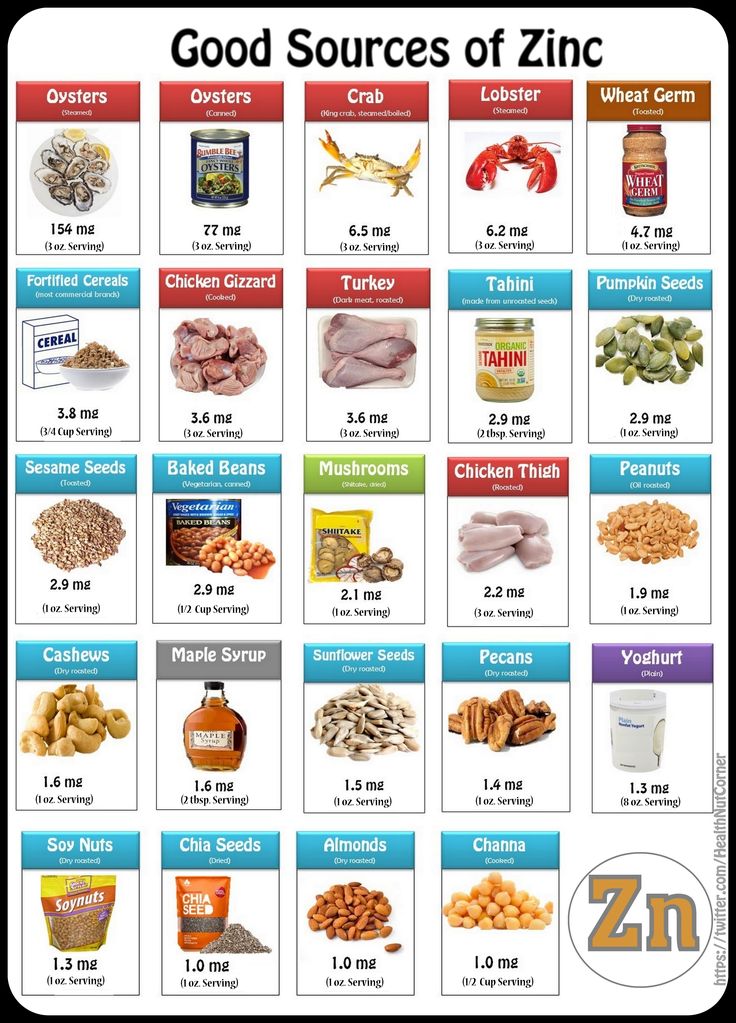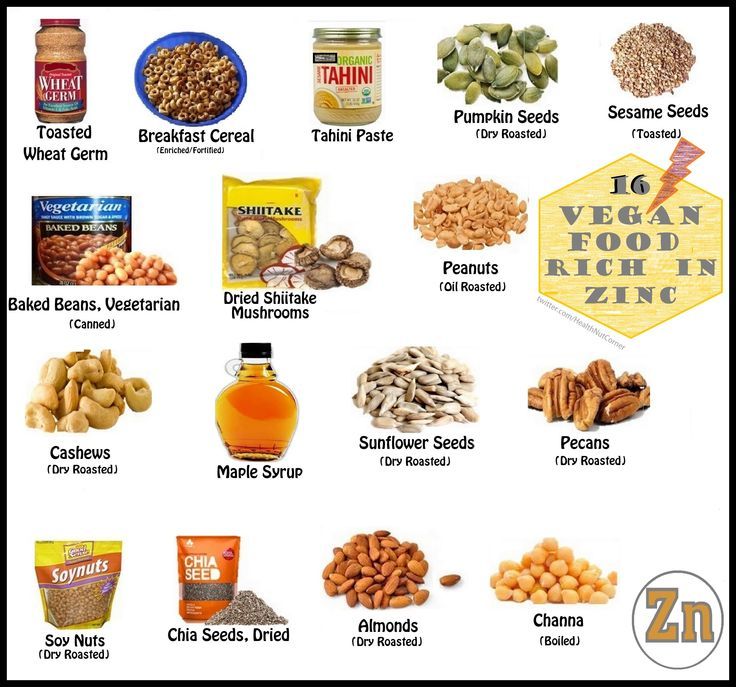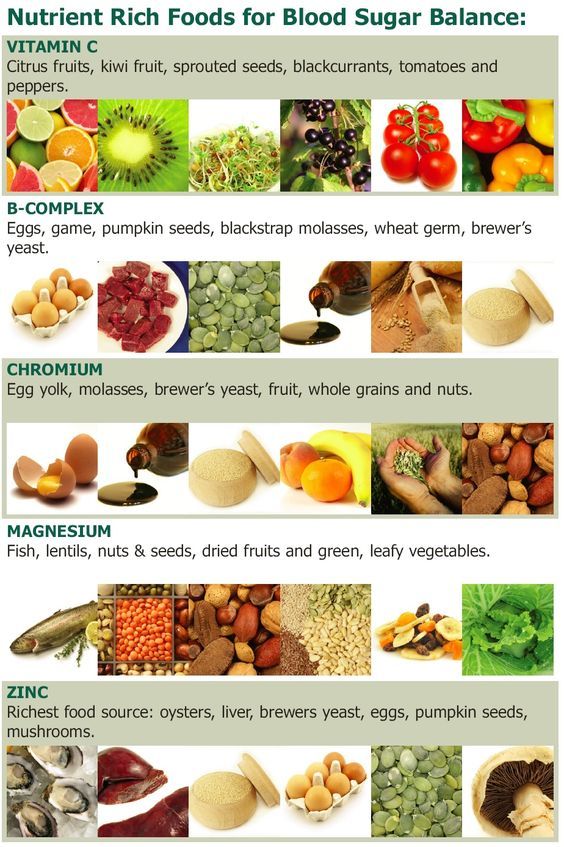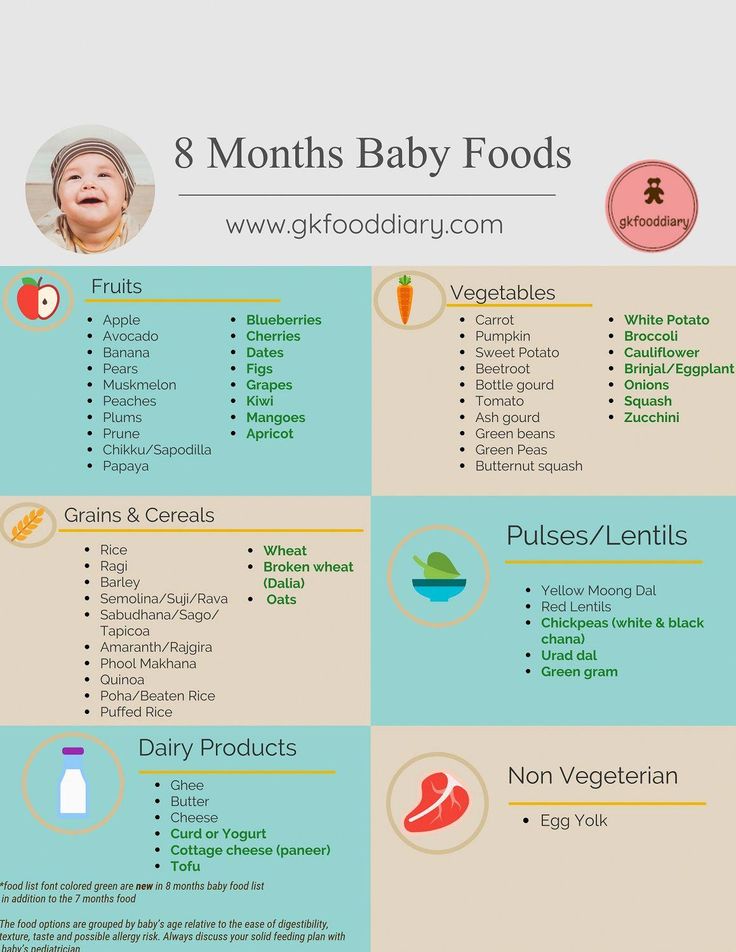Zinc rich foods for babies
Zinc Rich Foods for Babies and Toddlers, Foods High in Zinc for Kids, Zinc Benefits for Child Growth
Zinc-rich foods like legumes, seeds, nuts, yogurt, whole grains and eggs can prevent vitamin deficiencies in kids. Here is a list of zinc-rich foods which you must include in your kid's diet
Did you know that breast milk contains a small amount of zinc? It helps the newborn build immunity. Zinc is essential for your child's overall development as it is required to produce proteins and DNA for the body, digest nutrients present in food, to re-grow and repair body tissues.
Sheela Krishnaswamy, leading diet, nutrition and wellness consultant from Bangalore says, "Zinc is important to maintain immunity and protect against infections. It is also an important part of many enzymes and plays a role in wound healing."
What is zinc?
You now know that zinc is critical to our physical and mental well-being, but what else do you know about this metal?
"Zinc is important to maintain immunity and protect against infections. It is also an important part of many enzymes and plays a role in wound healing."- Sheela Krishnaswamy, nutrition consultant
Zinc is a trace element that is found in cells throughout our body. It is a nutrient that is essential for a healthy immune system and smooth functioning of the brain. It also decreases the risk of certain diseases.
However, our body is not capable of producing zinc. So, we need to consume zinc-rich foods to supply our body with this essential element.
Sheela Krishnaswamy adds, "Zinc is easily available in common foods like sesame seeds, almonds, egg yolk, chana, poppy, cumin (jeera) and mustard seeds."
Benefits of zinc for your child
|
Recommended doses of Zinc for kids
Although zinc is essential for the proper functioning and growth of our body, it should only be consumed in the recommended doses.
| Age-wise daily recommended allowance for Zinc |
| 0-6 months 7 months to 3 years 4-8 years 9-13 years 14-18 years | 2mg 3mg 5mg 8mg 11mg |
7 Zinc-rich foods for kids
Since our bodies cannot store zinc, we have to include zinc-rich foods in our child's daily diet. Here is a list of 7 zinc-rich foods for kids:
1. Seeds: Most seeds are a rich source of zinc; however, some are more than others. Seeds like sesame, hemp, mustard, pumpkin and chia seeds have an ample amount of zinc. Seeds are an excellent addition to your child's diet as they contain fiber, good fats, essential vitamins and minerals.
2. Whole grains: Your child can get his share of zinc from whole grains like wheat, oats and rice. However, keep in mind that grains contain an anti-nutrient called phytate, which reduces the absorption of zinc by the body. Whole grains are still preferred as it provides other important nutrients like fiber, B vitamins, magnesium, iron, phosphorus, manganese and selenium. A diet rich in whole grains is beneficial for your child too.
Whole grains are still preferred as it provides other important nutrients like fiber, B vitamins, magnesium, iron, phosphorus, manganese and selenium. A diet rich in whole grains is beneficial for your child too.
3. Meat: All meats have generous amounts of zinc. Go for skinless poultry or lean cuts of meat with fewer fats to get your quota of zinc.
Do you know that most dairy products like low-fat milk and yogurt pack a good amount of zinc too? 4. Low-fat milk and yoghurt: We all know that dairy products have plenty of calcium. But do you know that most dairy products like low-fat milk and yoghurt pack a good amount of zinc too? Daily intake of milk or yoghurt can fulfill your child's requirement for zinc. All you need to have is a cup of low-fat plain yoghurt — it has 2.2mg of zinc.
5. Legumes: If your child is zinc-deficient, give him boiled chickpeas as snacks. All kinds of legumes, lentils, and beans have an abundant amount of zinc. However, absorption of the zinc found in legumes is less, because of the presence of the anti-nutrient, phytates.
However, absorption of the zinc found in legumes is less, because of the presence of the anti-nutrient, phytates.
If your kids are vegetarian or following a vegan diet, legumes could still provide some amount of zinc. You can also include legumes in your family's diet for the high protein and fiber content.
6. Seafood: Oysters are the best choice for fulfilling your zinc requirements. A medium-sized oyster contains around 5.3mg of zinc. Lobsters and crabs also have a large amount of zinc.
7. Nuts: Nuts like almonds are an excellent source of zinc. Use roasted nuts like cashews, peanuts, walnuts as snacks for your hungry teenage children.
Are excessive amounts of zinc bad for your child?
Small amounts of zinc that you get from food do not harm your child. However, be careful if your child is having zinc from vitamin supplements. An excessive amount of zinc from supplements could cause diarrhoea, vomiting, abdominal cramps and headaches. Long-term use of zinc supplements could lead to toxicity.
Long-term use of zinc supplements could lead to toxicity.
The amount of zinc your child need may be minimal but zinc deficiency could lead to many development issues. Zinc supplements are available in the market, however, it always good to get them from food sources for your child.
Why these 5 zinc-rich foods should be added to your child’s diet
Trace mineral zinc is a micronutrient which plays a very crucial role in the growth and development of young children by helping build strong immune, nervous, and reproductive systems. Our body does not produce zinc on its own, so it is important to include it in our diet or through zinc supplements. Zinc deficiency leads to a loss of appetite, growth failure, skin disease, impaired immunity and low cognition in children. World Health Organization (WHO) reported that consumption of zinc rich foods or zinc supplements can reduce the mortality and morbidity rates in population and demonstrated the preventative action of zinc supplements on children aged 6 months to 12 years.
Here is the Recommended Dietary Allowance (RDA) for zinc
RDA is the average daily level of intake that is sufficient to meet the nutrient needs of a healthy individual. An RDA is based on scientific research.
Indian Council of Medical Research (ICMR), 2010 laid down RDA’s for various nutrients as per the age group. RDA for zinc for children from 1-12 years of age is as below:
- 1 to 3 years: 5 mg/day
- 4 to 6 years: 7 mg/day
- 7 to 9 years: 8 mg/day
- 10 to 12 years: 9 mg/day
Zinc’s role in the body and the immune system
Zinc plays an important role in maintaining normal physiological functions of the body and strengthens immunity. The various functions of zinc in our body are categorised below:
- Biochemical - Zinc is a co-factor for enzymes and used for synthesis and stabilisation of genetic material, necessary for cell division and synthesis.
- Cellular - It is used for cell growth and development, maintaining cell membrane integrity, tissue growth and repair, and wound healing.

- Immunological - Helps in production of immune cells like neutrophils, T- cells, B-cells and natural killer cells.
- Endocrinological - Zinc aids in thyroid hormone metabolism, reproduction (spermatogenesis), pancreatic function and prolactin secretion.
- Neurological - It enhances and improves children’s cognition, memory, taste, acuity and vision.
- Haematological - Zinc stimulates red blood cell formation, haemoglobin and haematocrit, and helps in blood coagulation factors.
- Skeletal - It helps in bone mineralisation, especially in children, which affects growth and development.
Top 5 foods that are rich in zinc
- Whole Grains and Legumes - Wheat, quinoa, oats, rice, chickpeas, lentils and beans contain a substantial amount of zinc and magnesium. Sprouting, fermenting and soaking can increase the bioavailability and absorption of zinc. You can prepare dals, khichdi and soups with these grains and legumes.

- Vegetables and Seeds - Pumpkin seeds, hemp seeds, sesame seeds and squash are foods with high zinc content. They are also high in fibre, healthy fats and vitamins. Seeds can be used in baked items, added to salads and shakes, or sprinkled on stir fries too. Some vegetables like potatoes, green beans, mushrooms, kale also contain small amounts of zinc. You can prepare curries and stews with these or a salad as well.
- Nuts - Peanuts, cashew, and almonds are rich sources of zinc and magnesium. They are also a good source of healthy fat and fibre. 100 gm of cashews contains 5.34 mg of zinc as per Indian food composition table, 2017. You can add these nuts to rice dishes, curries, smoothies or sweet dishes, or enjoy them as is.
- Milk and dairy products - Milk, yogurt, fortified cheese are zinc rich foods for vegetarians. A glass (200 ml) of cow milk contains 0.66 mg of zinc and 100 gm of paneer has around 2.7 mg of zinc as per Indian food composition table, 2017.
 Milk shakes, smoothies, and cheese dips are popular recipes you can try. Yogurt or milk can be added to cereals or oats too.
Milk shakes, smoothies, and cheese dips are popular recipes you can try. Yogurt or milk can be added to cereals or oats too. - Dark Chocolate- It contains reasonable amount of zinc and magnesium. Around 100 gm of dark chocolate or bar with 70-85% dark chocolate contains 3.3 mg of zinc. Adding dark chocolate to muffins, cakes or cookies is a good idea. You can prepare tasty shakes and ice creams with it too.
Here are some other benefits of zinc in children, according to new research
- University of Toronto and the Journal “Neuron” suggested that zinc plays a vital role in regulating how neurons in brain communicate with one another, which improves learning and memory in children.
- A study by Open Respiratory Medicine Journal and Cochrane review concluded that taking zinc lozenges or syrup is beneficial in reducing the common cold and upper respiratory infections in children.
- A number of scientific reports suggest that zinc supplementation helps in treating diarrhoea in children.

- Zinc plays an important role in maintaining skin integrity and structure which helps in healing skin ulcers, acnes, diaper rash and irritations.
- Age-related macular degeneration (AMD) can also be reduced by inclusion of zinc in diet that prevents cellular damage in retina, which helps in delaying the progression of AMD and vision loss.
So to conclude, zinc is an essential trace mineral that should be included in children’s diet. It helps in growth and metabolism, improves immunity, aids in cognitive development, and treats common cold and diarrhoea in children. Whole grain foods, fortified cereals, cooked beans, cheese, oatmeal, cashews and almonds are some excellent zinc-rich food options that should be added to the diet of young children to help boost their growth and development.
To learn more about growth and possibilities for your child visit www.nangrow.in
Read More Articles on Recipes
Want to know how to make better health choices for your family?
Top 10 Affordable Sources of an Important Micronutrient TEA.
 ru
ru Zinc is hardly one of the micronutrients you consider vital to your health. But its deficiency leads to the fact that rashes and inflammation appear on the skin, and a common cold drags on for weeks. We invite you to look at zinc from the other side and find out how to replenish its reserves without resorting to the services of doctors.
Cellular metabolism and assimilation of vitamins
Zinc works at the cellular level: it helps to activate antioxidants that enter the body from foods. So we get protection from harmful ultraviolet radiation and free radicals. If there is not enough zinc, we experience causeless fatigue and cannot perform even the simplest household activities, there is little energy, and sleep is also disturbed.
In short, zinc is needed for:
- digestion of proteins obtained from food,
- regeneration of skin cells (and normalization of sebum production),
- rapid removal of inflammation of the epidermis and mucous membranes, 9015 vitamins (9015 primarily E, A and D),
- synthesis of white blood cells, leukocytes,
- normalization of the lymphatic system and strengthening of immunity.

Which foods containing zinc should be in the diet constantly
Seafood (oysters, mussels)
But the situation with them is ambiguous: in our northern latitudes they are not so easy to find fresh, and they are not cheap. In addition, as a rule, no one is limited to one oyster, and getting an excess of zinc is also quite easy. Which is bad, because then the assimilation of other important microelements (copper and iron) and vitamin C becomes difficult. In addition to a large amount of zinc, bran contains amino acids, B vitamins and dietary fiber, which help the digestive tract.
Peanuts (and paste)
Unsweetened peanut butter is the best choice for making sandwiches based on whole grain bread with bran (read more about its beneficial properties in our material). Just one such sandwich will give the body two-thirds of the daily dose of zinc!
Sesame and pumpkin seeds (and their oil)
To get the most benefit from the seeds, they should be eaten raw (sesame is also the absolute champion in calcium content, read more about it in our article). Add them to salads and cereals, smoothies and yogurts. Oil can be used as a dressing for ready-made dishes, but you should not fry on it in order to preserve all the beneficial properties.
Add them to salads and cereals, smoothies and yogurts. Oil can be used as a dressing for ready-made dishes, but you should not fry on it in order to preserve all the beneficial properties.
Whole-grain cereals (oats, millet, buckwheat)
No wonder nutritionists and nutritionists around the world strongly advise children and adults to eat porridge for breakfast. A portion of porridge provides up to half of the daily dose of zinc, whole grains contain other vitamins and minerals, and there are not so many calories. Solid benefit for the figure, skin health and immunity!
Beans and chickpeas
It is strange that legumes have not yet been classified as superfoods, because they definitely deserve it. It is especially important to eat them daily for those who adhere to a vegetarian diet: in addition to zinc and other vitamins, they contain a lot of vegetable protein. Most importantly, do not forget to soak and cook them properly (read why this should be done).
Red Meat
Meat eaters will be pleased to know that one serving of freshly cooked red meat contains a daily dose of zinc (best grilled or stewed with minimal oil).
Cocoa powder and chocolate
A cup of fragrant cocoa or hot chocolate, gourmet mousse or brownie? The main thing is that the content of cocoa products is at least 75%, then such a dessert will be of real benefit. In addition to zinc, chocolate contains magnesium and iron.
Chicken eggs
In addition to zinc, eggs contain eye-friendly gluten, as well as calcium and magnesium. Adults can safely eat up to two eggs a day, all the myths about bad cholesterol have already been debunked.
Coconut (butter and milk)
Coconut milk is a great alternative to regular cow's milk, it can be added to coffee and tea, exotic soups and desserts, fruit salads and cakes based on it. It is allowed to give it to children from an early age, since there is no allergy to this vegetable milk.
Which of these products is your favorite?
what products contain, how to take them correctly according to doctors
Zinc is one of the vital trace elements for humans. He takes part in many processes: from the regeneration of skin cells to the formation of immunity. Maintaining the optimal amount of zinc in the body is a task that everyone should set for themselves. To solve it, it is necessary to understand how zinc enters the human body. We will understand this and other issues, as well as list foods rich in zinc.
Useful information about zinc
Zinc plays an important role in human life (1). It is part of more than 300 enzymes that catalyze the hydrolysis of proteins, peptides, some aldehydes and esters. The element is involved in carbohydrate metabolism with the help of insulin, a hormone that contains zinc. Only in the presence of zinc does vitamin A work. This element is also needed for bone formation. Zinc has antiviral and antitoxic effects. It affects the sense of smell and taste.
The element is involved in carbohydrate metabolism with the help of insulin, a hormone that contains zinc. Only in the presence of zinc does vitamin A work. This element is also needed for bone formation. Zinc has antiviral and antitoxic effects. It affects the sense of smell and taste.
Scientists have found a link between the zinc content in the body and human mental abilities. That is, the element ensures the proper functioning of the brain and high mental performance (2).
| Fact | Description |
| An adult human body contains about 2-3 g of zinc (3) | This is one of the most common metals (after iron). The highest concentration of zinc is in muscles (about 60%) and bones (about 30%) (4) |
| An excess of zinc is a rare occurrence | Zinc does not accumulate and is eliminated fairly quickly. The main way the element enters the human body is through food |
| Recommended Daily Value of zinc | For men - 15 mg per day For women - 12 mg per day For children - 5 mg per day |
| Zinc deficiency can lead to serious consequences | Lack of zinc in the body leads to impaired growth, decreased immunity, impaired central vision, and complications during pregnancy (4) |
Who is recommended to eat foods rich in zinc
Everyone should eat foods containing zinc in moderation. But there are categories of people for whom this is especially important. For example, pregnant and lactating women who have a lot of vitamins and minerals "pass" to the child. Foods rich in zinc should also be consumed by vegetarians, as they do not eat meat, which is one of the main sources of this trace element. Another category of people who need zinc-containing products is the elderly. They often suffer from zinc deficiency due to metabolic disorders and malnutrition.
But there are categories of people for whom this is especially important. For example, pregnant and lactating women who have a lot of vitamins and minerals "pass" to the child. Foods rich in zinc should also be consumed by vegetarians, as they do not eat meat, which is one of the main sources of this trace element. Another category of people who need zinc-containing products is the elderly. They often suffer from zinc deficiency due to metabolic disorders and malnutrition.
What foods contain zinc
Zinc is found in many foods of animal and vegetable origin. Most of them are easy to incorporate into your daily diet. Consider the top 15 foods rich in zinc.
1. Seafood
Photo: Maksim Konstantinov, globallookpress.com Most zinc is found in seafood. In 100 grams of oysters, there are from 70 to 80 mg of zinc - this is more than five daily doses of the element. Crab contains 7.6 mg of zinc per 100 g (half the daily value). Another seafood rich in zinc is lobster. In its composition, it has about 4 mg of zinc per 100 g.
In its composition, it has about 4 mg of zinc per 100 g.
Learn more
2. Pumpkin seeds
Photo: Jürgen Pfeiffer, globallookpress.comPumpkin seeds contain a large amount of zinc (about 10 mg per 100 g). This is approximately 70% of the daily dose. Pumpkin seeds are a source of fiber, antioxidants, vitamins and minerals. The optimal amount of seeds that an adult should consume is 30 g per day.
3. Bran
Photo: pixabay.comBread, crispbread, and other products made from bran contain a large amount of vitamins, amino acids and minerals, especially zinc. They are beneficial for human health, as they help the digestive organs, remove toxins from the body, improve the condition of the skin and hair. For example, wheat bran contains 7 to 8 mg of zinc per 100 g (about 60% of the daily dose).
4. Meat
Photo: pixabay.com A lot of zinc is found in beef, pork, lamb and turkey. Red meat is a rich source of protein and other beneficial elements. 100 g of beef contains more than 6 mg of zinc, lamb - 5 mg, pork - about 3 mg. This is from 25 to 60% of the daily requirement. However, you should not abuse meat, because its excessive inclusion in the diet increases the risk of cardiovascular diseases.
100 g of beef contains more than 6 mg of zinc, lamb - 5 mg, pork - about 3 mg. This is from 25 to 60% of the daily requirement. However, you should not abuse meat, because its excessive inclusion in the diet increases the risk of cardiovascular diseases.
Learn more
5. Nuts
Photo: Jürgen Pfeiffer, globallookpress.comNuts are also considered an important source of zinc. For example, 100 g of cashew contains more than 5.5 mg of zinc (almost 40% of the daily dose). Other nuts that contain zinc include pine nuts, walnuts, peanuts, almonds, hazelnuts, and pecans.
Learn more
6. Legumes
Photo: Paul Williams — Funkystock, globallookpress.comLegumes are rich in zinc. For example, 100 g of beans, chickpeas and lentils contain about 27% of the daily intake of zinc - this is more than 3 mg of the substance. But the beneficial substances in legumes are not absorbed as well as in animal products. Legumes are best eaten raw or boiled.
Learn more
7.
 Eggs Photo: Fernando Gutierrez-Juarez, globallookpress.com
Eggs Photo: Fernando Gutierrez-Juarez, globallookpress.com Another high zinc food is the chicken egg. Its yolk contains about 3 mg of zinc per 100 g - this is 26% of the daily requirement for an adult. In addition to zinc, chicken eggs are rich in calcium, magnesium, phosphorus, iron, iodine and other useful substances. They are recommended to be consumed daily in the amount of 1-2 pieces per day.
Learn more
8. Dark chocolate and cocoa
Photo: Ralph Kerpa, globallookpress.comCocoa and dark chocolate contain a lot of zinc. 100 g of cocoa powder contains 6-7 mg of a trace element, and 100 g of 75% chocolate contains more than 3 mg. In addition to zinc, these products contain calcium, phosphorus, magnesium, iron, and B vitamins. Since chocolate is high in calories, it should definitely not be abused. The optimal daily intake is 50-60 g per day.
9. Cheese
Photo: pixabay.com Record holders for the content of zinc among cheeses are products of hard varieties, such as parmesan and cheddar. They contain from 3 to 5 mg of the mineral per 100 g. This covers about 20-40% of the daily requirement of zinc. In addition, cheeses are rich in other substances beneficial to the human body: calcium, phosphorus, potassium and vitamins B, A, D, C, PP, E.
They contain from 3 to 5 mg of the mineral per 100 g. This covers about 20-40% of the daily requirement of zinc. In addition, cheeses are rich in other substances beneficial to the human body: calcium, phosphorus, potassium and vitamins B, A, D, C, PP, E.
Learn more
10. Whole grain porridge
Photo: Victor Lisitsyn, globallookpress.comOne serving of whole grain porridge can contain half of the daily requirement of zinc. This is especially true for barley (2.8 mg per 100 g), buckwheat (2.5 mg per 100 g) and wheat (1 mg per 100 g) groats. Porridge is a healthy product, because their composition is rich in various vitamins and microelements. Another important plus is low calorie content.
Learn more
11. Oils
Photo: pixabay.comVegetable oils are also zinc-rich foods. For example, flaxseed (7 mg per 100 ml) and coconut (2 mg per 100 ml). In addition, zinc is found in sesame, peanut, grape seed and pumpkin seed oils.
Learn more
12.
 Dairy products Photo: pixabay.com
Dairy products Photo: pixabay.com Dairy products are valuable sources of zinc, especially yogurt and kefir. Depending on the composition and fat content, in 100 g they can contain up to 2 mg of zinc. Dairy products are also rich in probiotics, which have a beneficial effect on the intestines and the body as a whole.
13. Greenery
Photo: pixabay.comGreenery is a storehouse of vitamins, minerals and beneficial trace elements, including zinc. Parsley is the leader in its content, because 100 g of this product contains approximately 9% of the daily intake of the substance (1 mg). In second place are dill and basil (0.9 and 0.8 mg per 100 g), in third place is spinach (more than 0.5 mg per 100 g).
Learn more
14. Vegetables
Photo: pixabay.comMany vegetables are rich in zinc. For example, asparagus contains up to 5% of the daily requirement of zinc per 100 g, beets - 4%, and Brussels sprouts and potatoes - about 3%.
Learn more
15.
 Fruits Photo: Sebastian Kahnert, globallookpress.com
Fruits Photo: Sebastian Kahnert, globallookpress.com Some fruits contain zinc in small amounts. 100 g of avocado contains 0.65 mg of zinc, pomegranate - 0.35 mg, apricot - 0.08 mg.
Find out more
How to properly consume foods with zinc
Now let's talk about how to consume foods containing zinc.
Follow measure
The recommended intake of zinc for an adult is 12-15 mg per day. With a significant excess of the dose, you can get unpleasant consequences in the form of abdominal pain, diarrhea, nausea, and impaired taste / smell.
Choose the right cooking method
To get the most out of your food, you need to cook it right. For example, legumes need to be soaked and steamed for a long time. As for meat, it should be stewed or baked (frying is not the healthiest option). Vegetable oils should not be subjected to heat treatment - it is better to just add a couple of spoons to the salad.
Aid zinc absorption
Vitamins B, A and C are essential for good zinc absorption. To maintain optimal levels of zinc in the body, you need to include foods rich in these vitamins in your diet. Alcohol and coffee, on the contrary, interfere with the absorption of zinc, so it is better not to use them together with zinc-containing foods.
To maintain optimal levels of zinc in the body, you need to include foods rich in these vitamins in your diet. Alcohol and coffee, on the contrary, interfere with the absorption of zinc, so it is better not to use them together with zinc-containing foods.
Reviews of doctors about products with zinc
Therapist of the Clinical Hospital on the Yauza of the Medscan group Lina Dmitrochenko:
— Zinc is a metal that is vital for our body. It is responsible for the proper functioning of the reproductive system, mental development, helps strengthen bone tissue, heal fractures and heal wounds. Children especially need this microelement during the growth period.
Doctor of preventive and anti-aging medicine, nutritionist, nutritionist Natalya Zubareva:
— Zinc is not produced in the body, so we must replenish our daily supply from outside.
Popular questions and answers
Questions answered by our experts Natalia Zubareva and Lina Dmitrochenko.
How to find out if there is a lack of zinc in the body?
Natalya Zubareva:
— Signs such as frequent colds, exacerbations of autoimmune diseases, including dysfunction of the thyroid gland, allergies, as well as brittle nails and hair, can indicate a lack of zinc in the body. Constant fatigue, lethargy, depressed mood, poor appetite - this can also be a zinc deficiency. When it comes to cravings for certain foods, cravings for red meat definitely signal a zinc deficiency.
Lina Dmitrochenko:
— Early manifestations of micronutrient deficiencies include irritability, nervousness, in some cases agitation, and, on the other hand, lethargy and loss of appetite. In more serious cases, there are problems with wound healing, weakened immunity and frequent infectious diseases, hair loss, brittle nails, deterioration of night vision up to the development of night blindness, damage to the skin, thyroid gland and liver.
Who is at risk for zinc deficiency?
Natalia Zubareva:
— Pregnant and lactating women, vegetarians, patients with diabetes, people experiencing active physical activity, and the elderly are at risk for zinc deficiency.
Lina Dmitrochenko:
— In addition, the risk group includes people with chronic inflammatory diseases of the gastrointestinal tract, as well as those who abuse alcohol.
What foods interfere with zinc absorption?
Natalya Zubareva:
- It is not specific foods that interfere with the absorption of zinc, but phytates, which, like zinc, are found in legumes, oats, brown rice, wheat and quinoa. Therefore, as a source of zinc, I recommend choosing red meat, cheese, milk, nuts and shellfish. These products are suitable for both male and female diets.
Lina Dmitrochenko:
— The greatest amount of zinc is found in animal products - fish, seafood, eggs, rabbit and chicken meat, beef, young lamb. But tea, coffee, milk, salt, sugar, alcohol, as well as an excess content of copper, tin, manganese, and folic acid in the body interfere with the absorption of zinc. Of the drugs that can lead to micronutrient deficiencies, steroids and oral contraceptives should be noted.











